
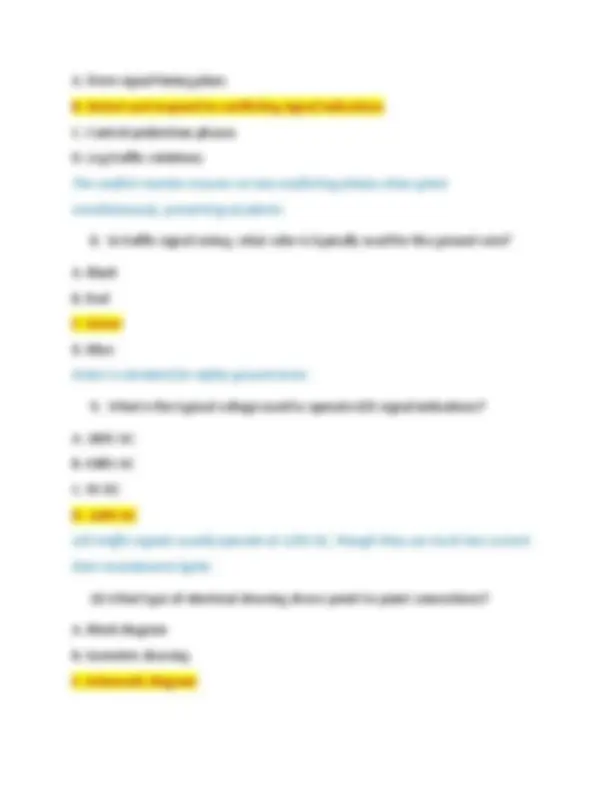
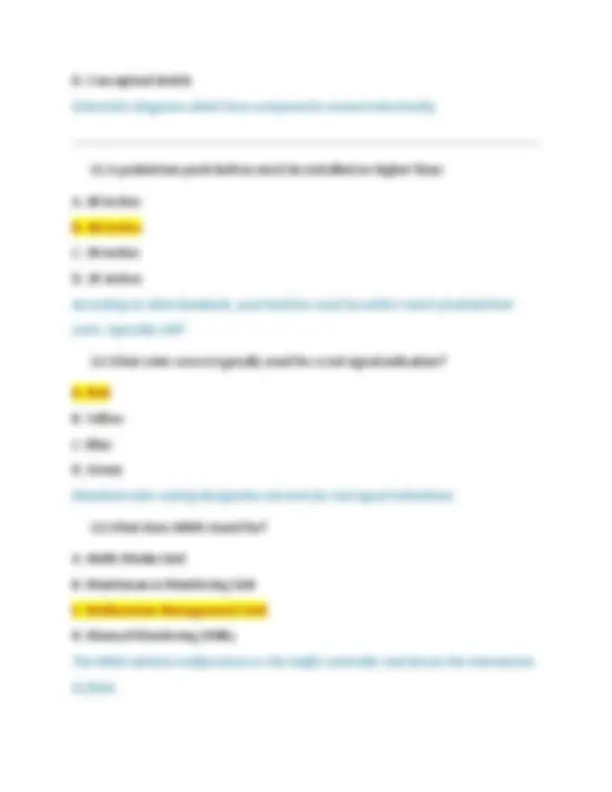
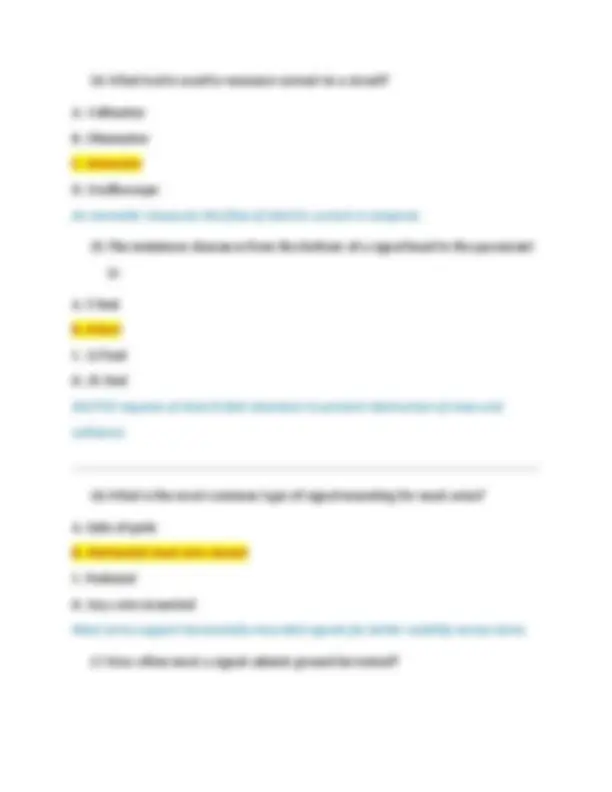
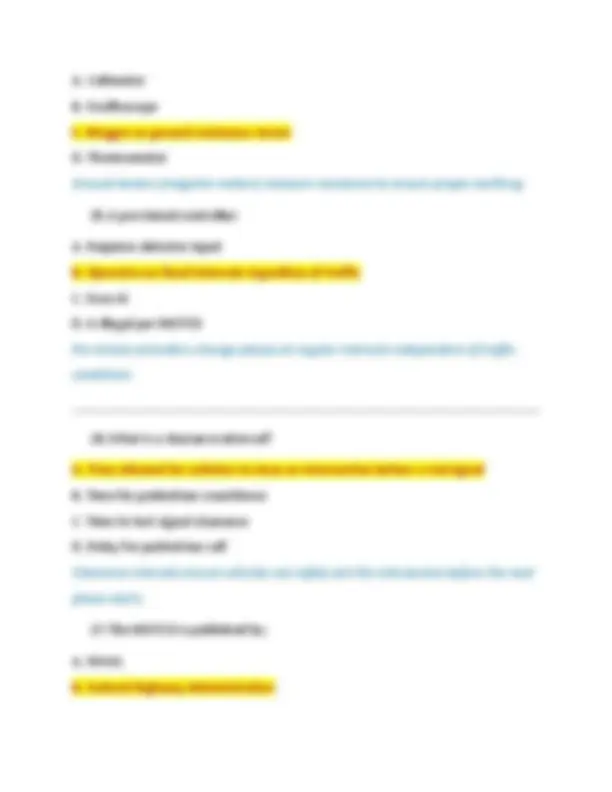
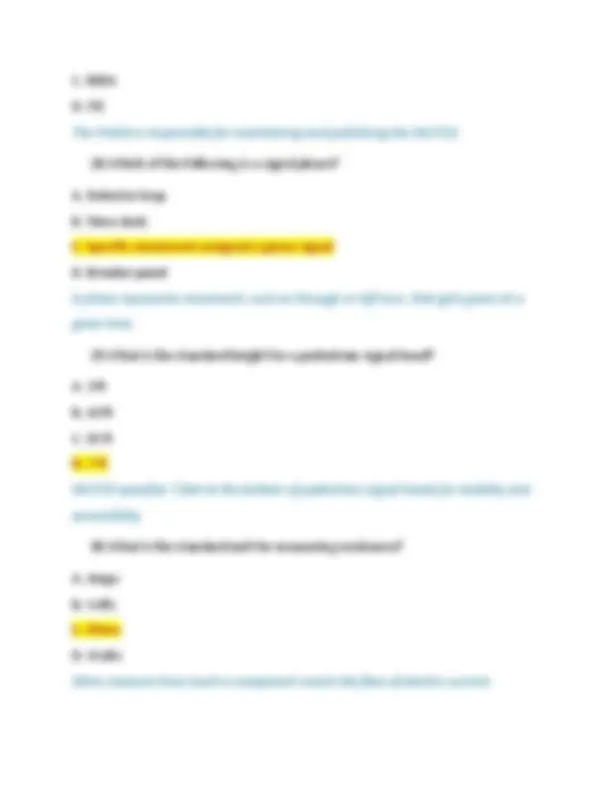
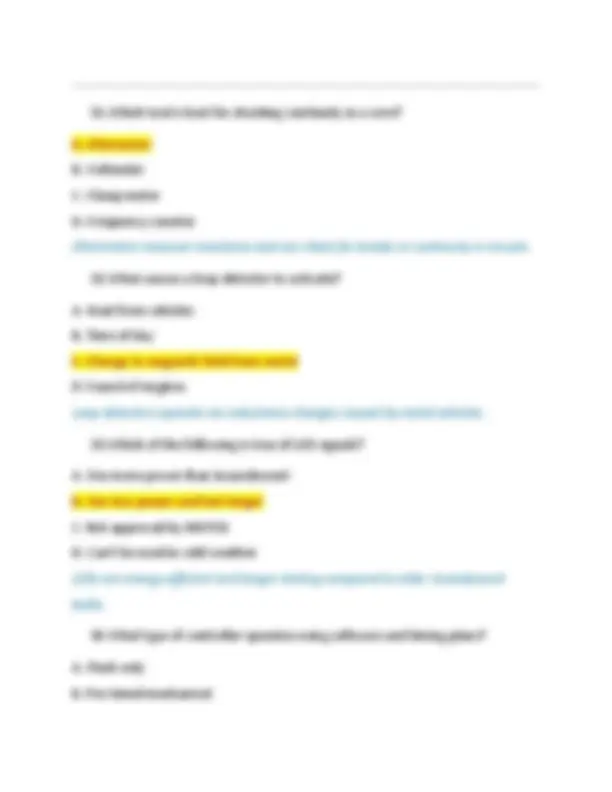
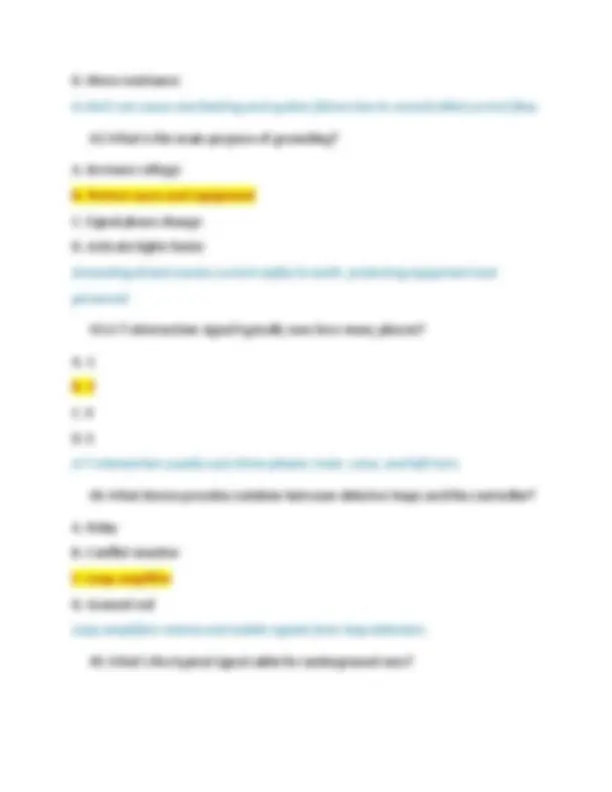

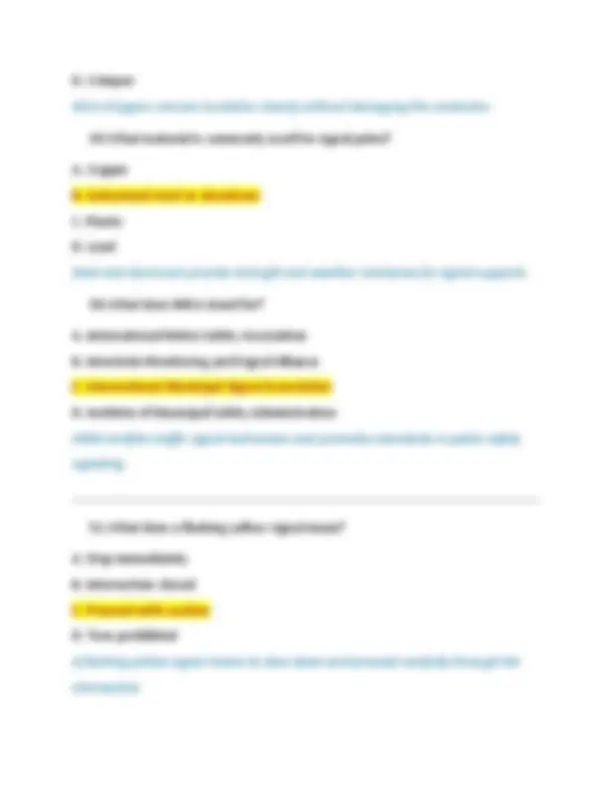
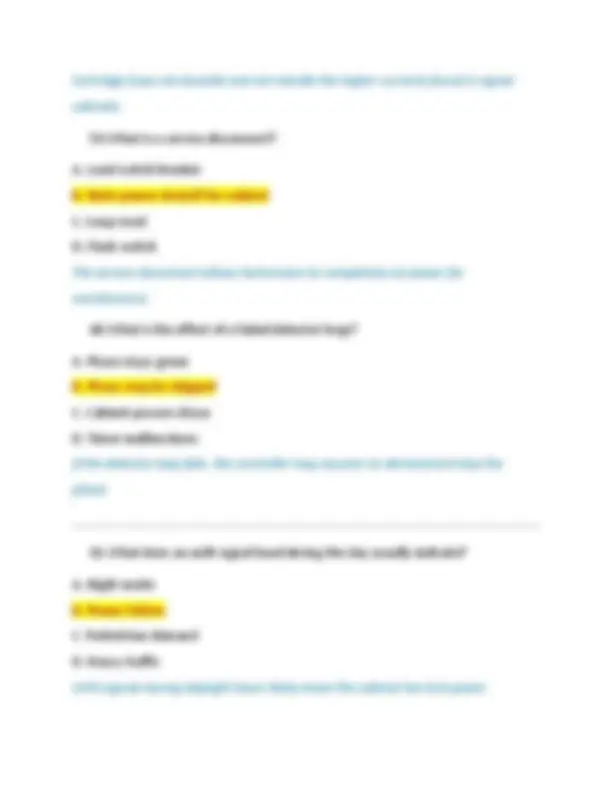
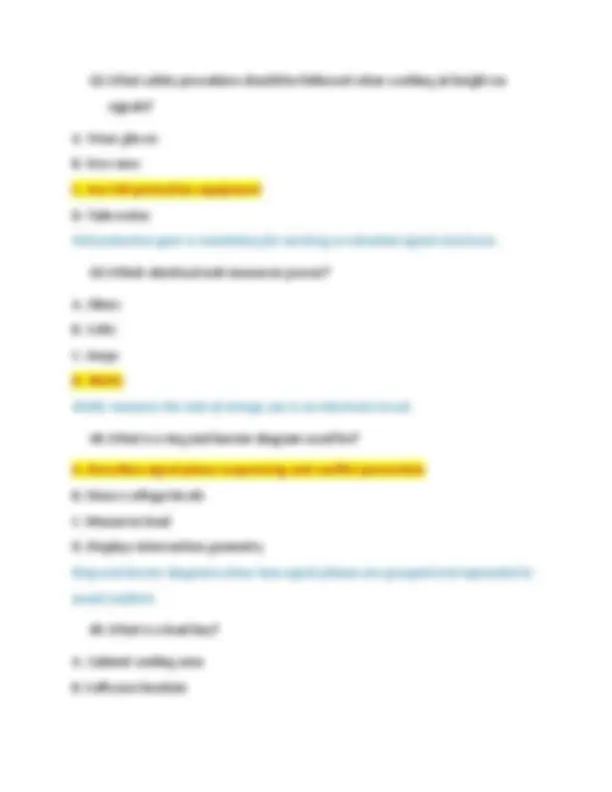
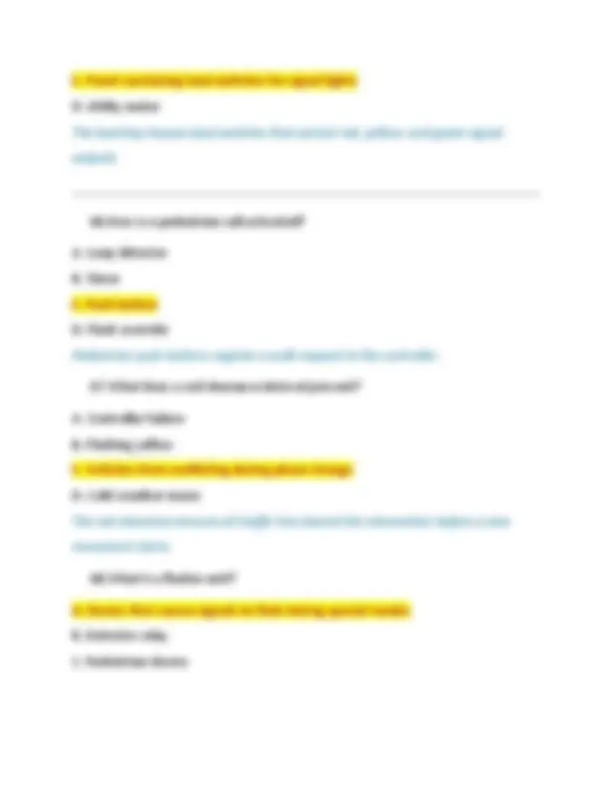
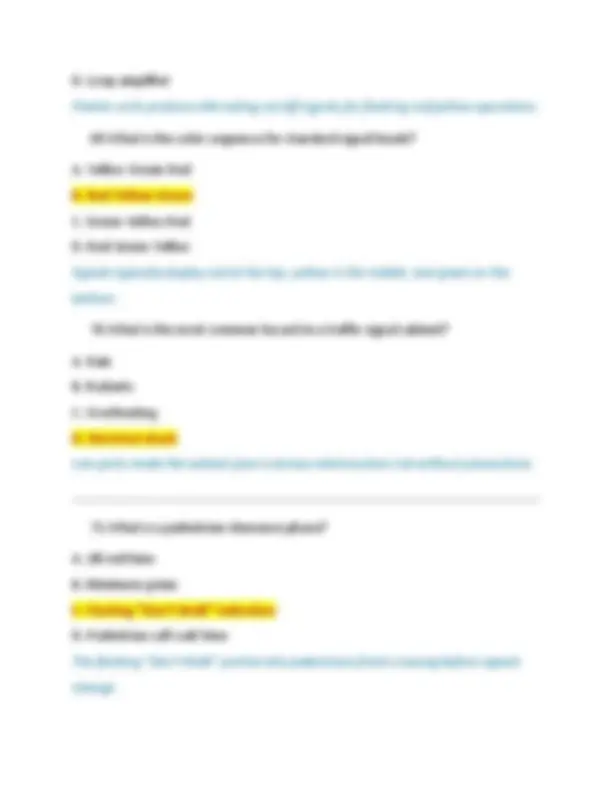
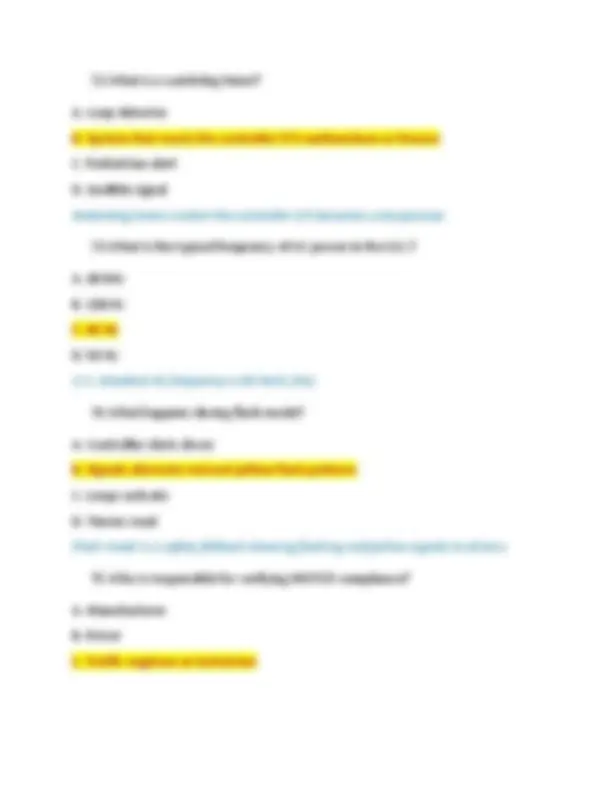
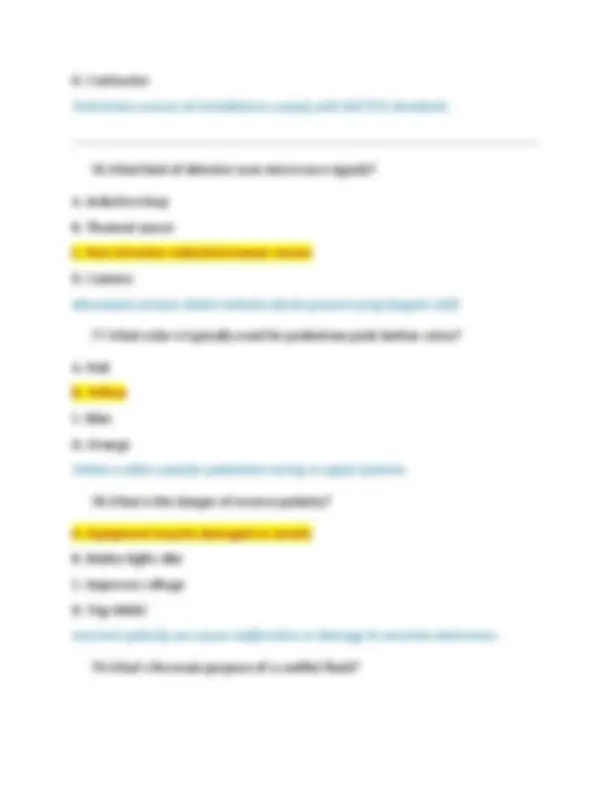
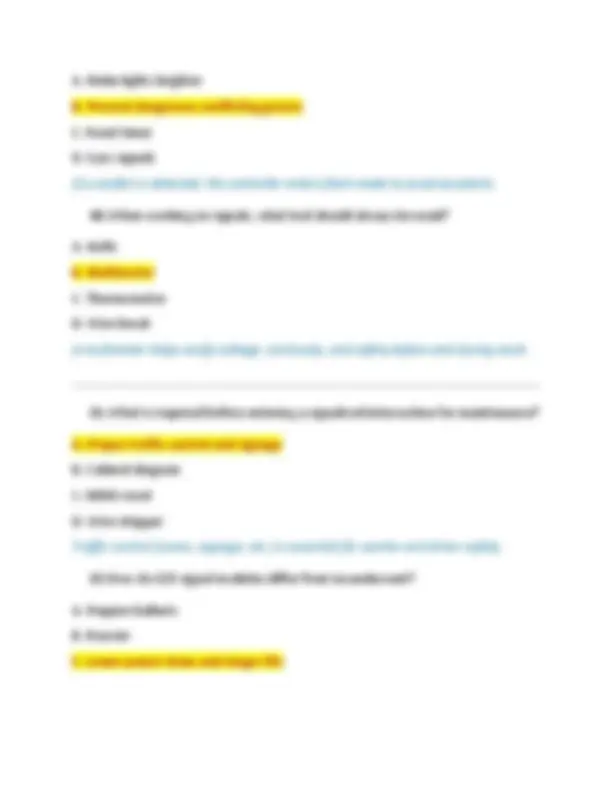
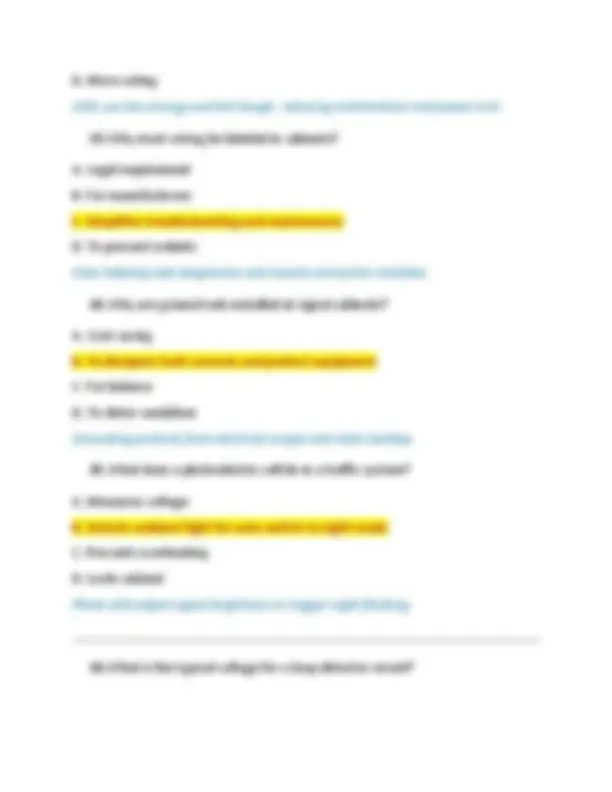
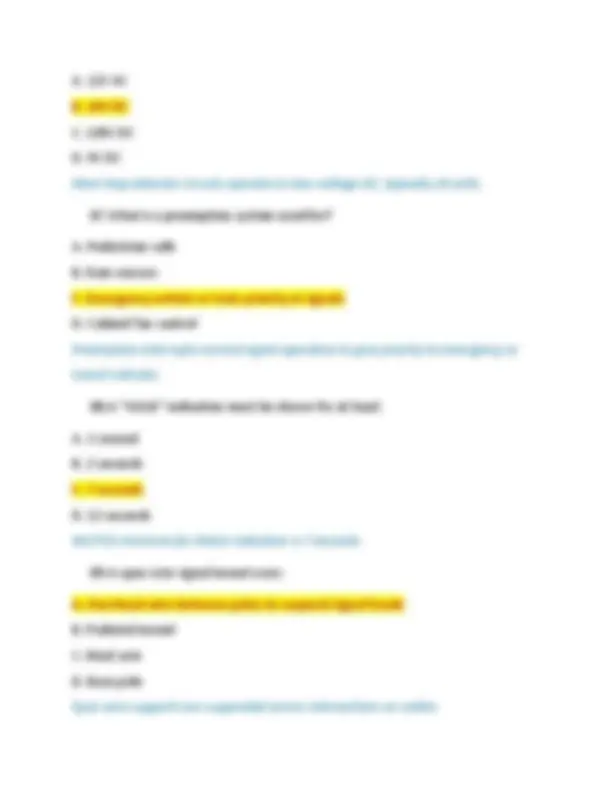
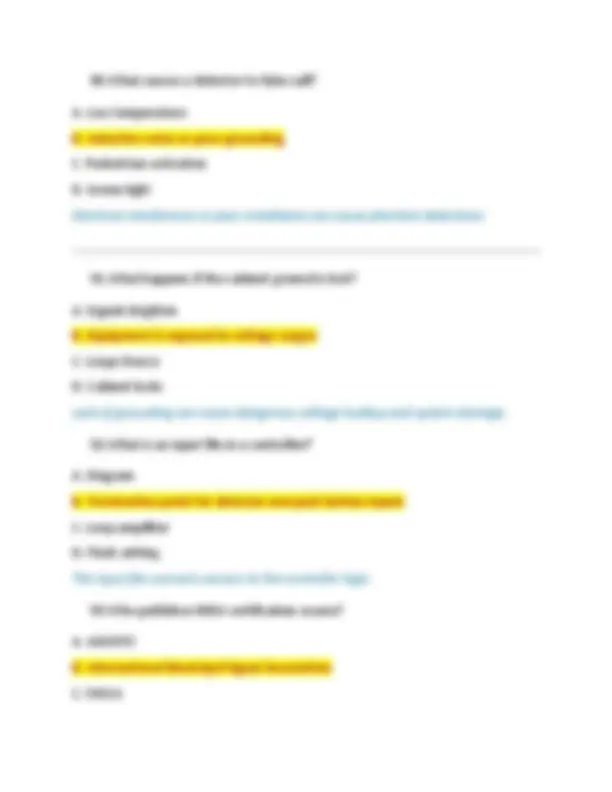
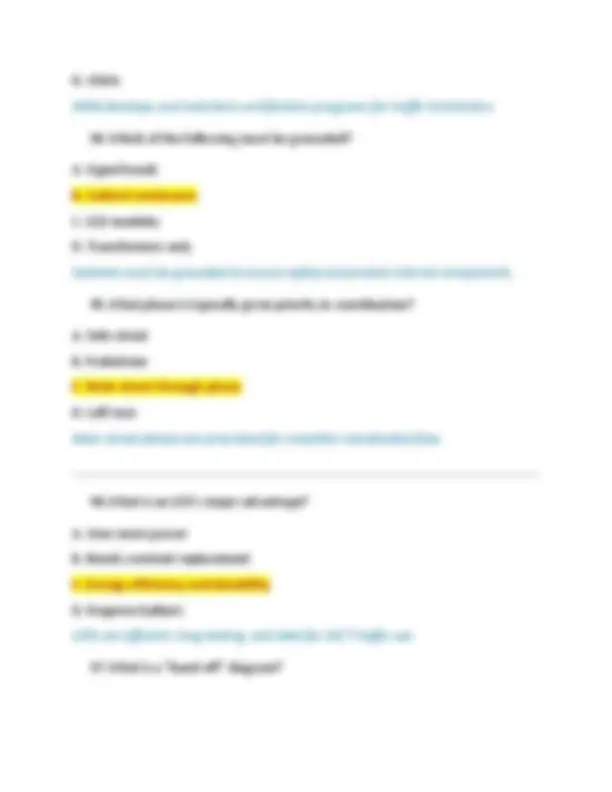
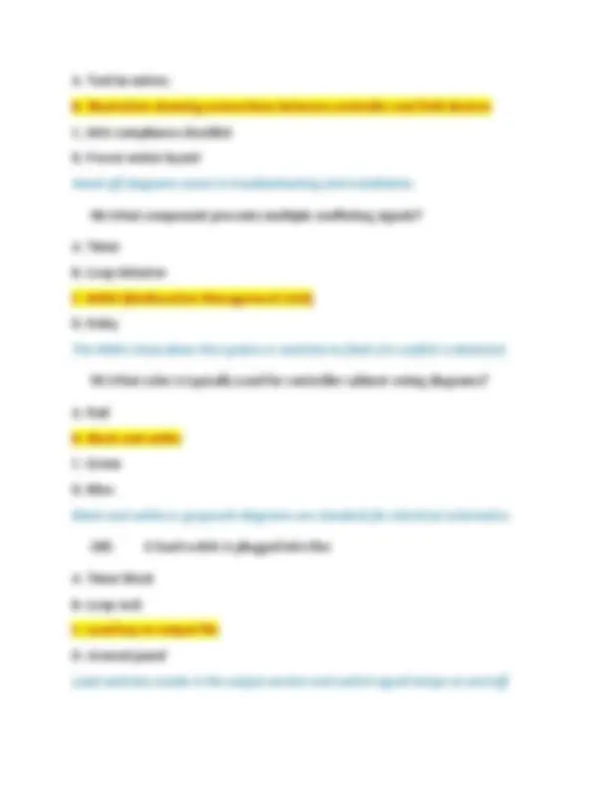



Study with the several resources on Docsity

Earn points by helping other students or get them with a premium plan


Prepare for your exams
Study with the several resources on Docsity

Earn points to download
Earn points by helping other students or get them with a premium plan
Community
Ask the community for help and clear up your study doubts
Discover the best universities in your country according to Docsity users
Free resources
Download our free guides on studying techniques, anxiety management strategies, and thesis advice from Docsity tutors
Traffic Signal Technician I Questions And Correct Answers (Verified Answers) Plus Rationales 2025 Q&A | Instant Download
Typology: Exams
1 / 30

This page cannot be seen from the preview
Don't miss anything!























Inductive loop detectors are embedded in the pavement and detect changes in inductance caused by metal vehicles.
D. Conceptual sketch Schematic diagrams detail how components connect electrically. 11.A pedestrian push button must be installed no higher than: A. 60 inches B. 48 inches C. 36 inches D. 24 inches According to ADA standards, push buttons must be within reach of wheelchair users, typically ≤48". 12.What color wire is typically used for a red signal indication? A. Red B. Yellow C. Blue D. Green Standard color coding designates red wire for red signal indications. 13.What does MMU stand for? A. Multi-Media Unit B. Maintenance Monitoring Unit C. Malfunction Management Unit D. Manual Monitoring Utility The MMU detects malfunctions in the traffic controller and forces the intersection to flash.
14.What tool is used to measure current in a circuit? A. Voltmeter B. Ohmmeter C. Ammeter D. Oscilloscope An ammeter measures the flow of electric current in amperes. 15.The minimum clearance from the bottom of a signal head to the pavement is: A. 5 feet B. 8 feet C. 12 feet D. 15 feet MUTCD requires at least 8 feet clearance to prevent obstruction of view and collisions. 16.What is the most common type of signal mounting for mast arms? A. Side-of-pole B. Horizontal mast arm mount C. Pedestal D. Guy-wire mounted Mast arms support horizontally mounted signals for better visibility across lanes. 17.How often must a signal cabinet ground be tested?
21.What should be your first step before working in a signal cabinet? A. Test for voltage and lockout/tagout B. Pull all fuses C. Open all breakers D. Disconnect the battery Always follow electrical safety protocols, including voltage testing and LOTO procedures. 22.The yellow change interval typically lasts: A. 1 second B. 2 seconds C. 3–6 seconds D. 7–10 seconds Yellow change intervals are generally between 3–6 seconds depending on approach speed. 23.The flashing red indication means: A. Proceed with caution B. Stop, then proceed when safe C. Do not enter D. Intersection closed Flashing red operates like a stop sign—drivers must stop before proceeding. 24.What instrument is used to verify grounding?
A. Voltmeter B. Oscilloscope C. Megger or ground resistance tester D. Thermometer Ground testers (megohm meters) measure resistance to ensure proper earthing. 25.A pre-timed controller: A. Requires detector input B. Operates on fixed intervals regardless of traffic C. Uses AI D. Is illegal per MUTCD Pre-timed controllers change phases at regular intervals independent of traffic conditions. 26.What is a clearance interval? A. Time allowed for vehicles to clear an intersection before a red signal B. Time for pedestrian countdown C. Time to test signal clearance D. Delay for pedestrian call Clearance intervals ensure vehicles can safely exit the intersection before the next phase starts. 27.The MUTCD is published by: A. FHWA B. Federal Highway Administration
31.Which tool is best for checking continuity in a wire? A. Ohmmeter B. Voltmeter C. Clamp meter D. Frequency counter Ohmmeters measure resistance and can check for breaks or continuity in circuits. 32.What causes a loop detector to activate? A. Heat from vehicles B. Time of day C. Change in magnetic field from metal D. Sound of engines Loop detectors operate via inductance changes caused by metal vehicles. 33.Which of the following is true of LED signals? A. Use more power than incandescent B. Use less power and last longer C. Not approved by MUTCD D. Can’t be used in cold weather LEDs are energy-efficient and longer-lasting compared to older incandescent bulbs. 34.What type of controller operates using software and timing plans? A. Flash-only B. Pre-timed mechanical
C. Actuated or semi-actuated D. Dummy box Actuated controllers use logic and timing plans based on real-time inputs. 35.What safety gear is required when working in a signal cabinet? A. Gloves B. Safety boots C. Safety vest D. All of the above Proper PPE includes electrical gloves, boots, and a high-visibility vest. 36.Which component prevents feedback in electrical circuits? A. Timer B. Diode C. Resistor D. Transformer Diodes only allow current to flow in one direction, preventing feedback. 37.A flashing yellow arrow means: A. Protected turn B. Yield and turn with caution C. Stop D. Proceed without looking Flashing yellow arrows instruct drivers to yield to oncoming traffic before turning. 38.A cabinet fan is used for:
D. More resistance A short can cause overheating and system failure due to uncontrolled current flow. 42.What is the main purpose of grounding? A. Increase voltage B. Protect users and equipment C. Signal phase change D. Activate lights faster Grounding directs excess current safely to earth, protecting equipment and personnel. 43.A T-intersection signal typically uses how many phases? A. 1 B. 3 C. 4 D. 5 A T-intersection usually uses three phases: main, cross, and left-turn. 44.What device provides isolation between detector loops and the controller? A. Relay B. Conflict monitor C. Loop amplifier D. Ground rod Loop amplifiers receive and isolate signals from loop detectors. 45.What’s the typical signal cable for underground runs?
A. Fiber B. IMSA 20-1 cable C. Speaker wire D. Romex IMSA 20-1 cable is standard for traffic signal installations. 46.Which of these is a common phase sequence? A. A-C-B B. 1- 3 - 4 C. A-B-C D. C-A-A Phases typically run in alphabetical or numerical order (A-B-C, or 1- 2 - 3). 47.What happens when two conflicting phases receive green? A. Conflict monitor trips to flash B. Nothing C. Signal stays green D. Controller resets The MMU detects this dangerous condition and forces flashing operation. 48.What is the preferred tool for stripping wire insulation? A. Knife B. Wire stripper C. Screwdriver
52.What device is responsible for isolating input signals from field wiring? A. Controller clock B. Opto-isolator C. Capacitor D. Thermistor Opto-isolators protect sensitive controller inputs from field-induced electrical spikes. 53.How often should detector loops be inspected? A. Every 5 years B. Annually C. Every 10 years D. Never Annual inspection ensures loop detectors function properly and detect vehicles consistently. 54.What does an all-red clearance interval ensure? A. Longer pedestrian time B. Intersection is completely cleared before the next movement C. All signals turn off D. Signal goes to flash All-red allows vehicles to exit the intersection before opposing traffic gets green. 55.Which tool measures voltage in a live circuit? A. Ohmmeter B. Voltmeter
C. Clamp D. Ground rod Voltmeters safely measure the potential difference between two points in a live circuit. 56.Which document governs installation of signal heads? A. IMSA manual B. IEEE code C. MUTCD D. UL listing The MUTCD sets national standards for placement and installation of traffic signal devices. 57.A phase that requires detector input to activate is called: A. Timed phase B. Coordinated phase C. Actuated phase D. Passive phase Actuated phases operate only when a vehicle or pedestrian is detected. 58.Which fuse type is most common in signal cabinets? A. Glass fuse B. Cartridge fuse C. Knife switch D. Screw-type
62.What safety procedure should be followed when working at height on signals? A. Wear gloves B. Use cone C. Use fall protection equipment D. Take notes Fall protection gear is mandatory for working on elevated signal structures. 63.Which electrical unit measures power? A. Ohms B. Volts C. Amps D. Watts Watts measure the rate of energy use in an electrical circuit. 64.What is a ring and barrier diagram used for? A. Describes signal phase sequencing and conflict prevention B. Shows voltage levels C. Measures load D. Displays intersection geometry Ring and barrier diagrams show how signal phases are grouped and separated to avoid conflicts. 65.What is a load bay? A. Cabinet cooling area B. Software location
C. Panel containing load switches for signal lights D. Utility meter The load bay houses load switches that control red, yellow, and green signal outputs. 66.How is a pedestrian call activated? A. Loop detector B. Timer C. Push button D. Flash override Pedestrian push buttons register a walk request to the controller. 67.What does a red clearance interval prevent? A. Controller failure B. Flashing yellow C. Vehicles from conflicting during phase change D. Cold weather issues The red clearance ensures all traffic has cleared the intersection before a new movement starts. 68.What is a flasher unit? A. Device that causes signals to flash during special modes B. Detector relay C. Pedestrian device